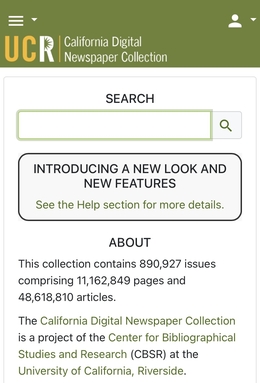
The Los Angeles Chinese massacre of 1871 was a racial massacre targeting Chinese immigrants in Los Angeles, California, United States that occurred on October 24, 1871. Approximately 500 white and Latino Americans attacked, harassed, robbed, and murdered the ethnic Chinese residents in what is today referred to as the old Chinatown neighborhood. The massacre took place on Calle de los Negros, also referred to as "Negro Alley". The mob gathered after hearing that a policeman and a rancher had been killed as a result of a conflict between rival tongs, the Nin Yung, and Hong Chow. As news of their death spread across the city, fueling rumors that the Chinese community "were killing whites wholesale", more men gathered around the boundaries of Negro Alley. A few 21st-century sources have described this as the largest mass lynching in American history.

Bessie Eyton was an American actress of the silent era. Eyton appeared in 200 films between 1911 and 1925. From 1911 to 1918, the period when the majority of her films were made, she was under contract to Selig Polyscope Company.

Yvette Andréyor was a French actress most popular in the era of silent film. She appeared in more than 100 films between 1910 and 1962.

Mission Acres was a rural community in the northern San Fernando Valley. Its historic boundaries correspond roughly with the former community of Sepulveda and present day community of North Hills within Los Angeles, California. The community's western border was Bull Creek, which flowed south out of Box Canyon in the western San Gabriel Mountains near San Fernando Pass.

The California Digital Newspaper Collection (CDNC) is a freely-available, archive of digitized California newspapers; it is accessible through the project's website. The collection contains over six million pages from over forty-two million articles. The project is part of the Center for Bibliographical Studies and Research (CBSR) at the University of California Riverside.
Albert Etter (1872–1950) was an American plant breeder best known for his work on strawberry and apple varieties.

Edward Kern (1860–1912) was a politician and police chief from Los Angeles, California. He also served in the war against Geronimo.
Ella Stuart Carson was an American screenwriter active during Hollywood's early silent days.

R. Cecil Smith (1880-1922) was an American screenwriter and actor active during Hollywood's silent era. He collaborated frequently with his wife, Ella Stuart Carson, and the pair often wrote under the name the R. Cecil Smiths. He sold cars before he decided to turn his talents to writing. He has often been confused with actor Robert Smith.
William H. Clune was an American railroad property developer, film exchange and then theater chain owner, film studio owner, and film producer.

Ray Hallor was an actor in films in the United States.
James Parks Jones was an actor in many silent films in the United States. His roles included many leading and supporting roles over more than a decade.

Cyrus J. Williams was a film producer and the co-founder of Cyrus J. Williams Productions. It was at 4811 Fountain Avenue in Hollywood. He worked in the real estate business before his foray into films.

Hugh E. Dierker was an American film director and producer.

Robert Whitaker was a Baptist minister and political activist born in 1863 in Padiham, Lancashire, England. He died in Los Gatos, CA in 1944. In 1869 he moved with his family to the United States. After attending Andover Newton Theological School he went on to hold several pastorates in the western United States including Oakland, CA, Los Gatos, CA., and Seattle, WA.

The HotelLankershim was a landmark hotel located at Seventh Street and Broadway in downtown Los Angeles, California in the United States. Construction began in 1902 and was completed in 1905. The building was largely demolished in the early 1980s following structural damage caused by the 1971 Sylmar earthquake. The "posh" hotel had nine stories, 300 rooms and two dining rooms.
Judy Forgot is a play by Avery Hopwood that was adapted into a 1915 film. The film is a five part comedy. Marie Cahill starred in the film. T. Hayes Hunter directed. It was produced by Universal Film Manufacturing. It was advertised as a screaming farce comedy hit filmed in five acts. Raymond L. Schrock wrote the screenplay.

Universal City Zoo was a private animal collection in southern California that provided animals for silent-era Universal Pictures adventure films, circus pictures, and animal comedies, and to "serve as a point of interest" for tourists visiting Universal City. The animals were also leased to other studios. The zoo was closed in 1930, after cinema's transition to synchronized sound complicated the existing systems for using trained animals onscreen.

Charlie, sometimes Charley or Old Charlie, was an elephant who lived at the Universal City Zoo in Universal City, California, United States, from approximately 1914 to 1923 and appeared in scores of silent-era films. He was executed in approximately August 1923 for his attack on trainer Curley Stecker.

Alexander Patterson Fleming was an American politician who served concurrently in the California State Assembly and on the Los Angeles City Council. He was the author of AB 626, which abolished the State Normal School at Los Angeles and created the Southern Branch of the University of California, which later became the University of California, Los Angeles.
















